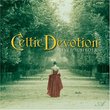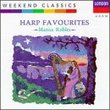| All Artists: Joshua Bell Title: Red Violin Concerto Members Wishing: 0 Total Copies: 0 Label: Sony Classics Original Release Date: 1/1/2007 Re-Release Date: 9/4/2007 Genres: New Age, Classical Styles: Instrumental, Chamber Music, Forms & Genres, Concertos, Historical Periods, Classical (c.1770-1830), Instruments, Strings Number of Discs: 1 SwapaCD Credits: 1 UPC: 828768806029 |
Search - Joshua Bell :: Red Violin Concerto
 | Joshua Bell Red Violin Concerto Genres: New Age, Classical
Bell began taking violin lessons at the age of four after his mother discovered her son had taken rubber bands from around the house and stretched them across the handles of his dresser drawer to pluck out music he had hea... more » |
Larger Image |
CD DetailsSynopsis
Album Description Bell began taking violin lessons at the age of four after his mother discovered her son had taken rubber bands from around the house and stretched them across the handles of his dresser drawer to pluck out music he had heard her play on the piano. His parents got him a scaled-to-size violin for their then five-year-old son and started giving him lessons. A bright student, Bell took to the instrument but lived an otherwise normal midwest Indiana life playing video games and excelling at sports, namely tennis and bowling, even placing in a national tennis tournament at the age of ten. Bell studied as a boy first under Mimi Zweig, then switched to Josef Gingold after assurances from Bell's parents that they were not interested in pushing their son in the study of the violin but simply wanted him to have the best teacher for their son's abilities. Satisfied that the boy was living a normal life, Gingold took Bell on as his student and to this day, Bell speaks of Gingold fondly as a great teacher and mentor. At the age of fourteen, Bell appeared as a soloist with the Philadelphia Orchestra conducted by Riccardo Muti. He studied the violin at the Indiana University's Jacobs School of Music, while managing to graduate from Bloomington High School North in 1984, a year ahead of schedule. Similarly Requested CDs
|
CD ReviewsRED VIOLIN: THE BRILLIANT DRAMA OF JOSHUA BELL & JOHN CORIGL RBSProds | Deep in the heart of Texas | 09/04/2007 (5 out of 5 stars) "Five SPECTACULAR Stars!! A marvelous, dramatic live premier performance by the violinist and orchestra and a mesmerizingly adventurous performance by the violinist & pianist duo!! The last time they met, Grammy-award winning violin virtuoso Joshua Bell joined forces with the brilliant classical composer John Corigliano on the soundtrack to the François Gira film "The Red Violin" and it won an Academy Award. That 20 track soundtrack has been re-imagined by Mr Corigliano into a wonderful, somewhat avant garde, four movement composition called "The Red Violin Concerto" which is performed here brilliantly by Mr Bell, conductor Marin Alsop and the Baltimore Symphony Orchestra. The piece is dedicated to Mr Corigliano's father. In addition, there is the heartfelt five movement "Sonata for Violin and Piano" performed by Mr Bell and the amazing pianism of Jeremy Denk. The 'Pieces De Resistance', the best of the best, begin with the Red Violin Concerto's 'knock-out' of a 16 minute multi-layered, multi-tempo "Chaconne" movement that runs the gamut of emotions from ethereal to intense, from arco to pizzacato, beautifully played by Joshua Bell and supported by Ms Alsop and the orchestra. A 'Tour de Force' in one movement! That's followed by 'castanet'-like accents, skittering notes, and a marvelous dissonant waltz in the second "Pianissimo Scherzo" movement with Mr Bell playing like a dervish, displaying a wonderful tone. And lastly, the thrilling 'train ride' of the final "Accelerando" movement with Bell playing hard, fast, and heartfelt amid orchestral cacophony full of surprises. The "Sonata for Violin and Piano" is almost a microcosm of the Concerto with beautiful themes, especially the plaintive "Lento", taunt violin soliloquies, technical bowed fireworks and great piano statements and interplay abounding. The sonata is just as captivating as the orchestral concerto. Joshua Bell, Ms Alsop and the orchestra, and Mr Denk are absolutely superb as is the composer Mr Corigliano. Kudos to all concerned!! My Highest Recommendation. Five HUGE Stars (Notes: * This review is based on an iTunes digital download. * Mr Bell plays a real "red Stradivarius violin", the 1713 "Gibson ex-Huberman", which was stolen twice and last recovered, prior to Bell's ownership, through an alleged deathbed confession after being missing for 5 decades. The tone of it, as heard here at the command of Mr Bell, is beyond description.)" A Fiddle of Infinite Jest Giordano Bruno | Wherever I am, I am. | 06/26/2008 (5 out of 5 stars) " Forty years passed between the composition of Corigliano's "Sonata for violin and Piano" (1963) and the Red Violin Concerto premiere in 2003. The two works are very different in scope and scale, but to my ears they have a lot in common. I don't guarantee that I could recognize a previously unheard piece of music instantly as Corigliano's, but I'd be willing to try. In his notes for this CD, Corigliano says: the sonata is "for the most part a tonal work, although it incorporates non-tonal and poly-tonal sections within it, as well as other 20th-century harmonic, rhythmic and construction techniques. The listener will recognize the work as the product of an American writer, although this is more the result of an American writing music than writing 'American' muisc -- a second-nature unconscious action on the composer's part." Gosh and golly, John, I think you may be optimistic about most listeners, but I hear what you mean. The great Czech composer Leos Janacek described his own efforts to shape his music, even instrumental, to the sound of the Czech language; most serious performers and listeners have agreed that he succeeded. This sonata by the young Corigliano sounds a lot like similar works by Janacek, except that the melodic language IS different and DOES sound like Americam English in some subjective manner that I can't quite define. I hear a slangy, sarcastic, but tender American voice in the phrases of the violin. I like this piece of music, and I appreciate the pairing of youthful and mature compositions on this CD. Joshua Bell is a thrilling performer. I can't compare his playing of these two compositions to anyone else's, since I haven't heard any other, but Bell clearly has the bowing technique to meet any eccentic demands of the music. The 4th Movement "Accelerando Finale" of the Concerto calls for very violent bowing, incorporating the fiddle into the overall percussion texture of the music. It makes a witty and vigorous conclusion for a showy concerto. The nucleus of the Red Violin Concerto is music that Conigliano composed for a film, which I haven't seen. Since I enjoy the Concerto thoroughly, I guess I'll rent the film." Brilliant Poliosophy | Madison, WI United States | 09/14/2007 (5 out of 5 stars) "A brilliant effort by soloist and composer. Although Corigliano does not chart any new theoretical territory, his melodies are exquisite, his orchestration is right on, and the structure is expertly crafted. Corigliano shows true mastery of the modern concerto form. Joshua Bell's performance is first-rate, the depth of his interpretation shows great maturity, and his execution is flawless. Bell's technical virtuosity will make you forget that this is a live recording. I whole-heartedly recommend this to all music lovers."
|

 Track Listings (8) - Disc #1
Track Listings (8) - Disc #1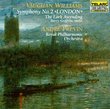
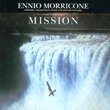
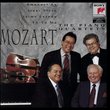
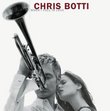

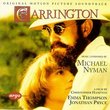

![The Last Mimzy [Original Motion Picture Soundtrack]](https://nationalbookswap.com/cd//m/28/0828/1020828.jpg)
